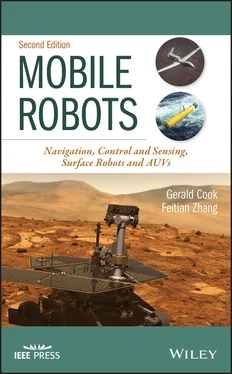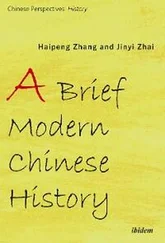To my two adult sons, Bo and Ford, for their continued encouragement and interest in my work .
To my mother, Rose Boyer Cook, who as a single parent of four provided so abundantly for our needs .
Feitian Zhang
To my wife, Mi Zhou, and our children, Andy and Lisa, for bringing me strength and joy that encourage me throughout my career .
To my parents, Guangbo Zhang and Dongmei He, for their unconditional love and support all the time .
A number of experiences and acquaintances have contributed to this project. The Countermine Branch of the Science Division of the Night Vision Electronic Sensors Directorate (NVESD), United States Army played a particularly important role through its sponsorship of related research. This research effort had as its objective the detection and geo‐registration of landmines through the use of vehicular mounted sensors. The nature of the problem required that a broad set of tools be brought to bear. These required tools included a vehicle model, sensor models, coordinate transformations, navigation, state estimation, probabilistic decision making, and others. Much of the required technology had previously existed. The contribution here was to bring together these particular bodies of knowledge and combine them so as to meet the objectives. This led to several interesting years of interaction with NVESD and other researchers in this area of applied research.
Afterwards, it was realized that the work could be cast in a more general framework, leading to a set of notes for a second‐year graduate course in Mobile Robots. A course on modern control and one on random processes are the required prerequisites. This course was taught several times at George Mason University, and numerous revisions and additions resulted as well as a set of problems at the end of each chapter. Finally, the notes were organized more formally with the result being the first edition of this book.
I would like to express my appreciation to some of the individuals who have influenced and encouraged me in the writing of this book. These include Kelly Sherbondy, my research sponsor at NVESD, former colleague Guy Beale, department chairman Andre Manitius, former student Patrick Kreidl, industrial associate Bill Pettus, collaborator at the Naval Research Laboratory Jay Oaks, former students Smriti Kansal and Shwetha Jakkidi who were part of the NVESD project, and the many other students who have attended my classes and provided me with inspiration over the years.
Gerald Cook
The major addition to the second edition of this book includes modeling and control of autonomous underwater vehicles (AUVs), which exhibits unique complex three‐dimensional dynamics. The materials are mainly based on my PhD research project on design, modeling, and control of a novel underwater vehicle named gliding robotic fish that is essentially a hybrid of underwater glider and robotic fish. The research, sponsored by National Science Foundation (NSF), aimed to develop an autonomous platform for aquatic environmental monitoring through fundamental understanding and effective control of gliding robotic fish, which eventually led to generalized modeling and control approaches for AUVs written in this book. I would like to acknowledge and thank my PhD advisor Xiaobo Tan, my collaborators Hassan Khalil at Michigan State University and Fumin Zhang at Georgia Institute of Technology for their enormous support and insightful guidance in the research project, and my colleague Gerald Cook for motivating and encouraging me in co‐writing the second edition of this book.
Feitian Zhang
The following is a suggested schedule for teaching a one‐semester course from this book.
1 Kinematic Models for Mobile Robots: 0.5 weeks.
2 Mobile Robot Control: 1.5 weeks.
3 Robot Attitude: 1.0 week.
4 Robot Navigation: 2.0 weeks.
5 Application of Kalman Filtering: 1.5 weeks.
6 Remote Sensing: 1.5 weeks.
7 Target Tracking Including Multiple Targets with Multiple Sensors: 1.0 week.
8 Obstacle Mapping and Its Application to Robot Navigation: 1.0 week.
9 Operating a Robotic Manipulator: 1.0 week.
10 Remote Sensing via UAVs: 0.5 weeks.
11 Dynamics Modeling of AUVs: 1.0 week.
12 Control of AUVs: 1.5 week.
It is hoped that this book will also serve as a useful reference to those working in related areas. Because of the overriding objective described in the title of the book, the topics cut across traditional curricular boundaries to bring together material from several engineering disciplines. As a result, the book could be used for a course taught within electrical engineering, mechanical engineering, aerospace engineering, or possibly others. We would like to acknowledge here that MATLAB ®is a registered trademark of The MathWorks, Inc. Also, please note, two of the videos referred to in Appendix Acan be viewed at https://www.wiley.com/en-us/Mobile+Robots%3A+Navigation%2C+Control+and+Remote+Sensing%2C+2nd+Edition-p-9781119534785.
Gerald Cook, ScD, is the Earle C. Williams Professor Emeritus of Electrical Engineering and past chairman of Electrical and Computer Engineering at George Mason University. He was previously Chairman of Electrical and Biomedical Engineering at Vanderbilt University and before that, Professor of Electrical Engineering at the University of Virginia. He is a Life Fellow of the Institute of Electrical and Electronics Engineers (IEEE), a former president of the IEEE Industrial Electronics Society and a former Editor in Chief of the IEEE Transactions on Industrial Electronics.
Feitian Zhang, PhD, is an Assistant Professor in the Department of Electrical and Computer Engineering at George Mason University. He received the Bachelor's and Master's degrees in Automatic Control from Harbin Institute of Technology in China, and the PhD degree in Electrical and Computer Engineering from Michigan State University. He was a Postdoctoral Research Associate in the Department of Aerospace Engineering at the University of Maryland prior to joining Mason. His research interests include robotics, control, artificial intelligence, and underwater vehicles.
I wish to take this opportunity to express my appreciation to Dr. Feitian Zhang for joining with me as Co‐Author in developing this second edition of Mobile Roots . He has demonstrated a high level of knowledge and skill in the area of autonomous underwater robots (AUVs) and adds a new dimension to the book with this contribution. It has been a pleasure working together on this project.
Mobile robots, as the name implies, have the ability to move around. They may travel on the ground, on the surface of bodies of water, under water, and in the air. This is in contrast with fixed‐base robotic manipulators that are more commonplace in manufacturing operations such as automobile assembly, aircraft assembly, electronic parts assembly, welding, spray painting, and others. Fixed‐base robotic manipulators are typically programmed to perform repetitive tasks with perhaps limited use of sensors, whereas mobile robots are typically less structured in their operation and likely to use more sensors.
As a mobile robot performs its tasks, it is important for its supervisor to maintain knowledge of its location and orientation. Only then can the sensed information be accurately reported and fully exploited. Thus navigation is essential. Navigation is also required in the process of directing the mobile robot to a specified destination. Along with navigation is the need for stable and efficient control strategies. The navigation and control operations must work together hand‐in‐hand. Once the mobile robot has reached its destination, the sensors can acquire the needed data and either store it for future transfer or report it immediately to the next level up. Thus, there is a whole system of functions required for effective use of mobile robots.
Читать дальше










